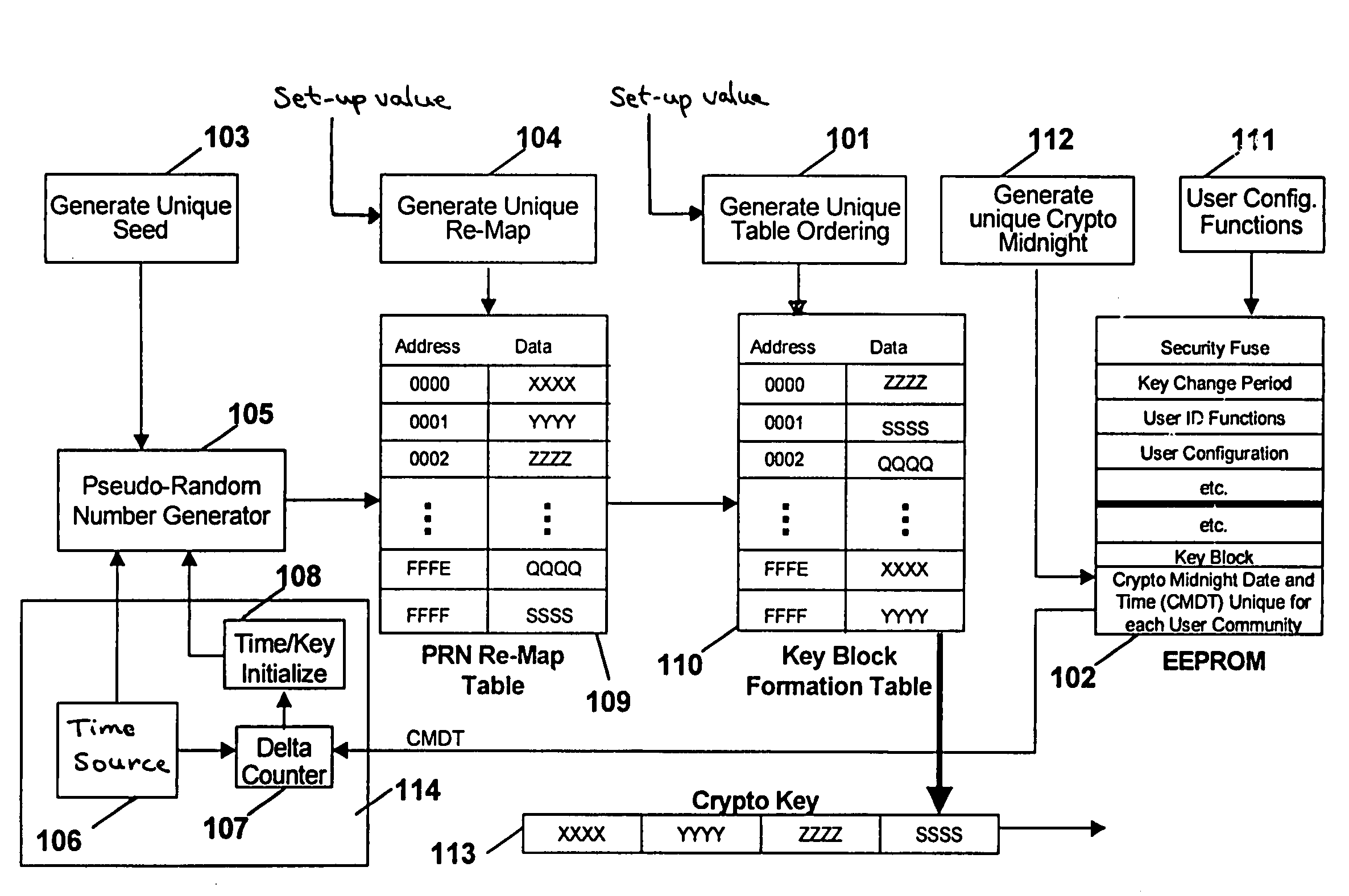Cryptographic communications using pseudo-randomly generated cryptography keys
a cryptography key and pseudo-random technology, applied in the direction of digital transmission, instruments, generating/distributing signals, etc., can solve the problems of undecodable or undecipherable information transmitted through a channel to unintended recipients, unintentional disclosure of keys to third parties, and other entities interfering with keys, etc., to enhance the strength of cryptographic algorithms and high frequency
- Summary
- Abstract
- Description
- Claims
- Application Information
AI Technical Summary
Benefits of technology
Problems solved by technology
Method used
Image
Examples
Embodiment Construction
[0033]Preferred embodiments of the present invention will now be described with references to FIGS. 1 through 5.
[0034]In a cryptographic communication system for an authorized user community employing the present invention, each user preferably possesses or has access to a pseudo-random key generator like the one described in FIG. 1.
[0035]FIG. 1 shows a schematic block diagram of a pseudo-random key generator according to one embodiment of the present invention. Referring to FIG. 1, the basic components of the pseudo-random key generator include a pseudo-random number (“PRN”) generator 105, a PRN re-map table 109, a key block formation table 110, a memory device 102 that is preferably an electrically erasable programmable read-only memory (“EEPROM”), and a timing circuit 114 that preferably includes a time source 106, a delta counter 107 and a time / key initialize device 108. It is to be noted that the all-hardware implementation shown in FIG. 1 can be replicated in all its functiona...
PUM
 Login to View More
Login to View More Abstract
Description
Claims
Application Information
 Login to View More
Login to View More - R&D
- Intellectual Property
- Life Sciences
- Materials
- Tech Scout
- Unparalleled Data Quality
- Higher Quality Content
- 60% Fewer Hallucinations
Browse by: Latest US Patents, China's latest patents, Technical Efficacy Thesaurus, Application Domain, Technology Topic, Popular Technical Reports.
© 2025 PatSnap. All rights reserved.Legal|Privacy policy|Modern Slavery Act Transparency Statement|Sitemap|About US| Contact US: help@patsnap.com



